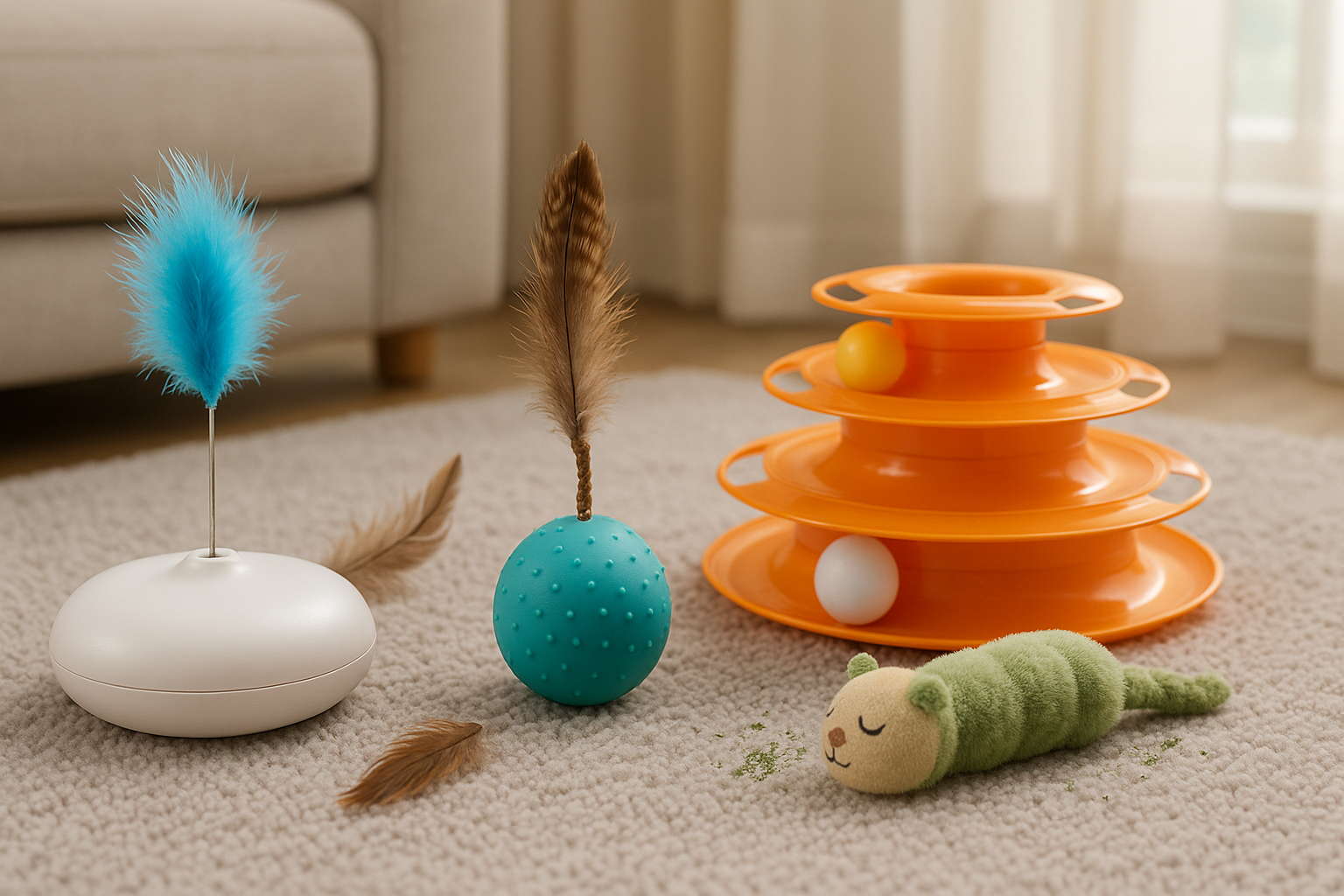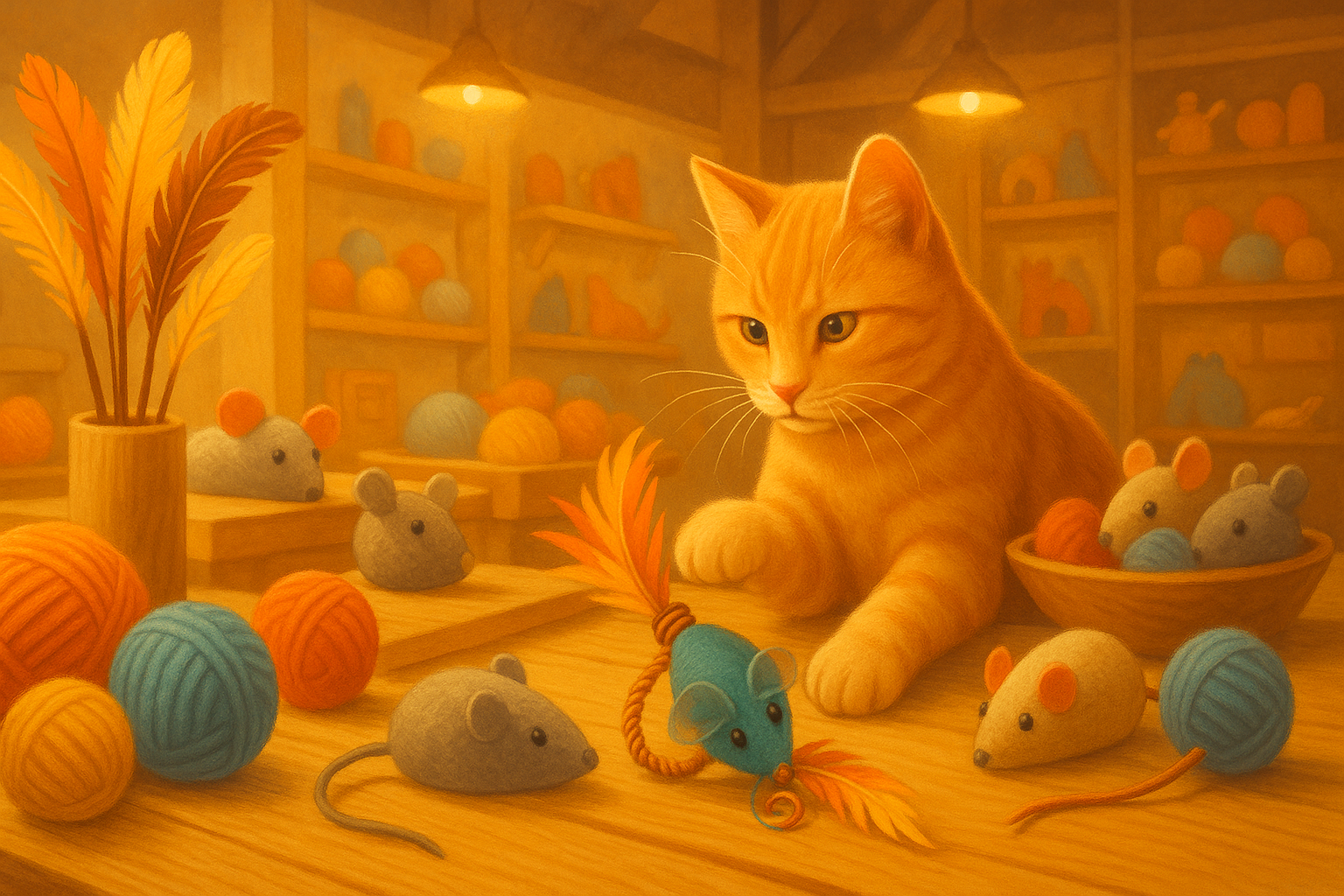Choosing the right cat toy for solo play is essential for keeping your feline friend active, happy, and mentally stimulated—especially when you’re not around to engage with them directly. Cats are naturally curious and energetic creatures, and without enough outlets for their instincts, they can quickly become bored or anxious. A well-designed solo toy allows them to play independently, satisfying their need for stimulation even during long stretches of alone time.
Toys built for solo play are crafted to move, react, or offer interactive elements that mimic hunting or exploration. Rolling balls, wobbling towers, self-moving mice, and textured chew toys are common examples. These toys don’t require human involvement, making them ideal for busy pet owners or cats left alone during the day. When chosen carefully, they can transform a quiet afternoon into an exciting adventure for your pet.
The effectiveness of a cat toy for solo play often lies in how well it replicates prey-like behavior. Toys that roll unpredictably, crinkle under paws, or bounce erratically trigger a cat’s instinct to chase, bat, and pounce. Incorporating feathers, bells, or catnip can further enhance appeal and engagement. These sensory elements keep the toy interesting, encouraging your cat to return to it throughout the day.
 Solo play isn’t just about physical activity—it also supports emotional well-being. When cats have engaging toys, they are less likely to develop stress behaviors such as over-grooming, scratching furniture, or vocalizing excessively. Mental stimulation is just as vital as exercise, especially for indoor cats who don’t have access to outdoor exploration.
Solo play isn’t just about physical activity—it also supports emotional well-being. When cats have engaging toys, they are less likely to develop stress behaviors such as over-grooming, scratching furniture, or vocalizing excessively. Mental stimulation is just as vital as exercise, especially for indoor cats who don’t have access to outdoor exploration.
Durability is another key factor when selecting a cat toy for solo play. Since these toys are used without supervision, they must be safe, sturdy, and free from small detachable parts that could pose a choking hazard. Materials like soft rubber, strong fabrics, or high-impact plastic are ideal, providing long-lasting fun without risk.
Strategic placement of solo toys around the home can also increase their effectiveness. Placing them near favorite sleeping spots, windowsills, or scratching posts ensures they’re easily discovered and naturally integrated into the cat’s routine. Rotating toys weekly or introducing new ones occasionally keeps things fresh and prevents play fatigue.
For multi-cat households, a variety of solo toys can help reduce competition and encourage individual play. Each cat may have a different preference—some might favor batting balls, while others love hiding and pouncing on small plush animals. Offering options supports diverse play styles and keeps every cat engaged.
Investing in a thoughtfully selected cat toy for solo play offers multiple benefits: it promotes physical health, nurtures independence, reduces stress, and protects household items from destructive behaviors. Whether you’re away at work or just need your cat to stay occupied, solo toys are a reliable way to enrich their environment and support their natural instincts.









